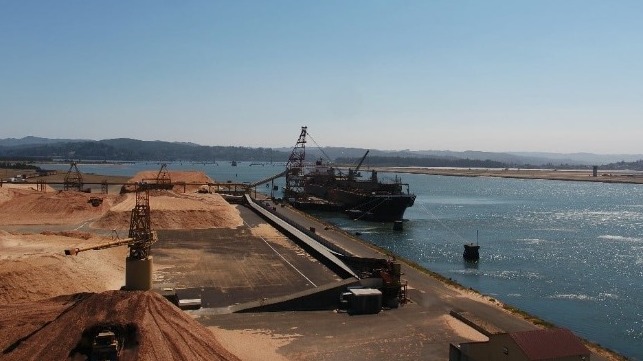DOT Turns Down $1.2B Grant for Coos Bay Container Terminal - For Now

The Port of Coos Bay has high hopes to build a brand new mega-container terminal on the Oregon coast, but its plans may have to wait for the next competitive round for federal funding.
Last September, the port announced that it had reached an agreement with Missouri-based NorthPoint Development - the largest industrial property developer in the United States - to build a multimodal container terminal at the port's North Spit. Once fully built out, it would move over one million forty-foot containers annually in and out via the existing Coos Bay Rail Line. The construction expenditures would be an infusion for the region's economy, and the project would bring hundreds of new jobs to an area with above-average levels of unemployment.
To build the terminal, the port applied to the U.S. Department of Transportation for $1.2 billion in funding through the Mega Grant program. Unfortunately, despite extensive advocacy by Oregon's senators and congressional representatives, the application was not successful during the 2022 funding cycle - but Port of Coos Bay plans to try again this coming year.
"We knew that it was important not to rely solely on funding through the Mega Grant program, given the competitive nature of the selection process and the significance that this project will have on the supply chain and in moving toward cleaner movement of cargo. The Mega Grant program is extremely competitive, so having a plan B to keep this project moving was imperative," said John Burns, Port CEO.
The next round of the Mega Grant program will be crucial for moving the project forward, according to NorthPoint president Chad Meyer. In the interim, the partners are working on other potential funding sources, including the Railroad Rehabilitation and Improvement Financing program and the Transportation Infrastructure Finance and Innovation Act program.
If built, the terminal at Coos Bay would be the only major container facility on the 400-nm stretch of coast between Oakland and Seattle (Portland's terminal receives little traffic due to its distance inland and its draft restrictions, though its volumes are on the rise). At the time of the announcement last fall, the partners envisioned the new terminal as an alternative to the problem of congestion at California's major container gateways. That problem has since abated, thanks to declining consumer demand, a return to normal levels of import cargo, and stiff competition from alternative ports on the Gulf Coast and East Coast.
